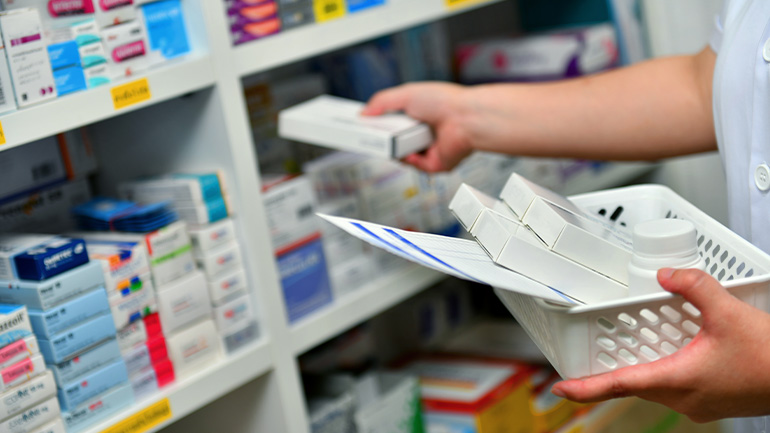Résultats du 30e sondage annuel sur les prix des médicaments de TD Cowen
Par : Steve Scala, R.Ph., CFA; Michael Nedelcovych, Ph. D.; Chris LoBianco; Paul Kuhn, Ph. D.
janv. 15, 2025 - 4 minutes
Aperçu :
- Notre sondage montre que la plupart des acheteurs croient que les prix des médicaments de marque augmenteront à un taux faible à un chiffre par année au cours des trois prochaines années, un rythme semblable à celui des dernières années.
- La plupart des répondants attribuent encore une fois la croissance globale des prix aux soins plus récents et dispendieux.
- L’oncologie, la thérapie génique/cellulaire, le diabète et les médicaments contre les maladies rares devraient contribuer le plus à l’augmentation des prix.
- L’incidence de l’Inflation Reduction Act (IRA) sur les prix devrait être légère. On s’attend maintenant à ce que l’IRA entraîne une plus grande utilisation dans cinq ans qu’auparavant.
- Les attentes en matière de pénétration biosimilaire ont été tempérées, tout comme les escomptes brut au net. La couverture des médicaments contre l’obésité devrait s’améliorer.
Le point de vue de TD Cowen
Faits saillants du 30e sondage annuel sur les prix des médicaments de TD Cowen, qui rend compte de 25 % des dépenses en médicaments aux États-Unis :
- Les prix des médicaments de marque américains augmenteront au cours des trois prochaines années à un taux annuel inférieur à 10 % grâce à l’innovation.
- L’IRA aura une incidence minimale sur les prix, mais positive sur l’utilisation.
- Pénétration biosimilaire modérée.
- Escomptes brut au net modérés.
- Amélioration de la couverture des médicaments contre l’obésité.
L’innovation biopharmaceutique, moteur des prix des médicaments
Le prix des médicaments est une source d’anxiété pour les investisseurs du segment biopharmaceutique. Toutefois, nous croyons que les prix aux États-Unis augmenteront à mesure que les nouveaux médicaments à prix plus élevé offriront des avantages aux patients. Tant que les produits biopharmaceutiques demeurent innovateurs, nous ne prévoyons aucun changement dans la tendance à la hausse des prix des médicaments.
Un sondage annuel auprès des acheteurs de médicaments aux États-Unis suggère une augmentation des prix malgré plusieurs initiatives de réforme
Nous avons mené des sondages annuels auprès des acheteurs de médicaments aux États-Unis au cours des 30 dernières années. Durant cette période, notre analyse a prédit que les prix des médicaments augmenteraient malgré les nombreuses initiatives de réforme, les craintes au sujet des prix et les changements gouvernementaux. Comme prévu, les prix des médicaments ont effectivement augmenté pendant cette période.
La sélection d’acheteurs de cette année, qui a répondu à notre sondage au quatrième trimestre de 2024, après les élections aux États-Unis, s’attend à ce que le coût d’acquisition des médicaments de marque par unité augmente en moyenne de 8 % au cours des trois prochaines années (9 % selon la moyenne pondérée). Cela correspond aux prévisions de l’an dernier, bien que la moyenne pondérée ait légèrement diminué (12 % en 2023). Parmi les répondants, 11 % attribuent une part importante (75 %) de l’augmentation prévue à un changement de composition vers de nouveaux traitements plus coûteux, mais ce pourcentage est en baisse par rapport à 15 % en 2023 et à 19 % en 2022.
Les résultats de notre sondage sont fondés sur les réponses de 27 organisations de soins de santé intégrés, gestionnaires de soins pharmacothérapeutiques et hôpitaux. Collectivement, ils ont acheté environ 179 milliards de dollars américains de médicaments en 2024, soit environ le quart du total des dépenses en médicaments aux États-Unis.
Segment biopharmaceutique fondamentalement solide
Nous considérons que le segment biopharmaceutique est fondamentalement solide compte tenu de la force des pipelines, de la dynamique d’unité favorable et du fait que les prix des médicaments aux États-Unis ne semblent pas être un frein à cette perspective, ce qui atténue l’érosion des prix à l’extérieur des États-Unis. Cette toile de fond permet une plus grande conviction dans les prévisions sur les produits. Ces produits devraient stimuler la croissance pour plusieurs années encore.
Les résultats du sondage de cette année devraient rassurer les investisseurs. L’innovation amène des prix plus élevés, de sorte que les entreprises les plus novatrices devraient profiter le plus, selon notre sondage.
À surveiller
L’Inflation Reduction Act (IRA) limite les dépenses personnelles des patients (depuis 2024) et permettra de négocier le prix de certains médicaments (dès 2026). Dans notre sondage, nous avons posé des questions sur l’impact observé en 2024 et celui prévu. Parmi les répondants, 26 % pensent que l’IRA aura un impact modéré (50 %) sur les prix des médicaments au cours des trois prochaines années. Aucun acheteur ne prévoit un impact important (75 %) et 15 % estiment que l’IRA n’aura pas d’impact. Il s’agit d’un changement par rapport à l’année dernière, quand 23 % croyaient que l’IRA n’aurait aucun impact.
Pour ce qui est de l’utilisation des médicaments, les acheteurs croient que les plafonds de dépenses personnelles ont entraîné une augmentation du volume moyen de 3 % (ou moyenne pondérée de 8 %) en 2024. Dans cinq ans, les acheteurs s’attendent à ce que cette composante entraîne une augmentation du volume moyen des médicaments de 5 %. Parmi les répondants, 22 % sont d’avis que l’IRA n’aura aucun effet sur les volumes de médicaments, ce qui représente un changement par rapport aux 42 % qui ont choisi cette réponse de l’an dernier. Nous avons aussi demandé si les prix des dix médicaments d’abord désignés par l’IRA pour Medicare se répercutent dans le contexte commercial hors Medicare; le sondage montre que 7 % des répondants croient que c’est certainement vrai, et 67 %, probablement vrai. En ce qui concerne les produits biosimilaires, les acheteurs s’attendent à une plus petite part.
Les clients abonnés peuvent lire le rapport complet du 30e sondage annuel : perspectives positives pour les prix des médicaments – Ahead of the Curve, sur le Portail unique de Valeurs Mobilières TD







